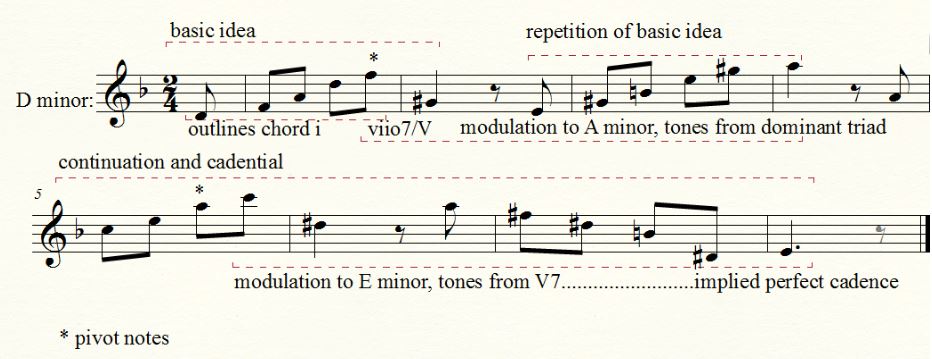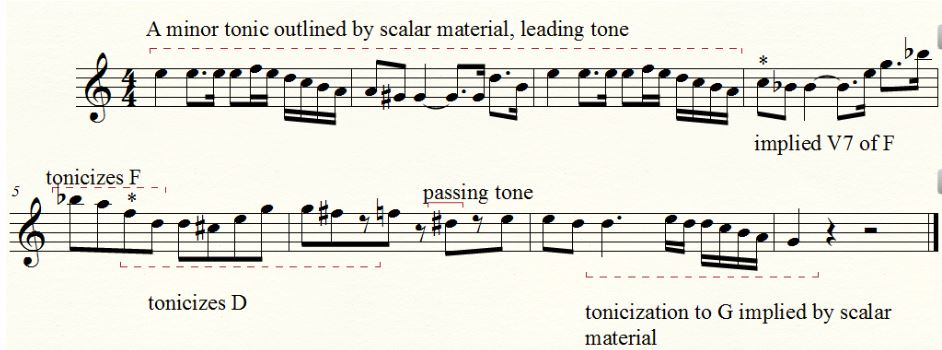Integrated Aural Skills 2019-20
Melodic Dictation Exam Review
Procedures for Success
The big picture: listening to the overall shape of the phrase
- Are any elements (rhythm, intervals, phrase shapes) repeated?
- What is the structure of the melody? A Mozartean sentence or period? Sequential repetitions of melodic material?
- Implied cadences: what solfege degree does the melody end on?
- Related: does the melody change key? If so, to what? Where is the pivotal tone that signifies an implied secondary dominant that takes us to the new key? The tone we most often hear is ti of the new key.
Fine-tuning and checking your work
- If you missed some of the beginning but got the last measure, work backwards. There is no rule that you must work beginning to end.
- Write material in the staff right away. Avoid writing solfege syllables, because this is correlated with octave displacement and other pitch errors. At this advanced stage of your training, it is better to place pitches directly in the score.
- Don’t waste your first hearings writing rhythm only, because it’s much harder for most people to write pitches than rhythms. If you have any qualms, reserve your final hearing to conduct along and make sure you notated rhythms correctly. For most people, rhythm error detection is harder than melodic error detection.
Practice Examples
- Joseph Haydn, Piano Sonata No. 12
Play through this example on the piano, and take stock of the melodic and harmonic annotations that are they key to understanding Classical phrases. In the final exam, you may be called upon to write a dictation of comparable difficulty.
- Wolfgang Amadeus Mozart, Piano Sonata in A Minor K. 310

